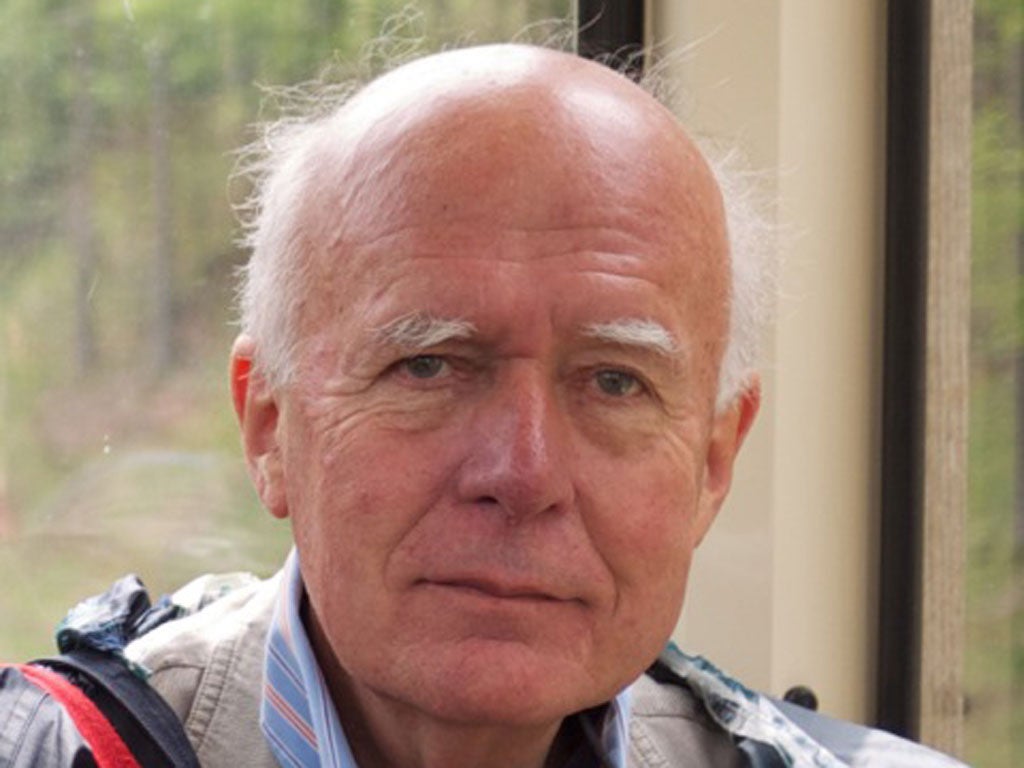Peter Campbell, a polymath of limitless curiosity, walked in a hurry but always had time for friends. An insightful and generous art critic, a typographer of impeccable propriety and an accomplished watercolourist whose work appeared on the cover of the London Review of Books from the early 1990s, Peter was also a sympathetic mentor to other artists and writers. As the Falklands War artist Linda Kitson said: "Peter can always see what you are trying to do." Any artist whose work he reviewed might have said the same. He combined understanding of intentions with a profound knowledge of techniques.
He was born in a taxi in Hataitai Tunnel in Wellington, New Zealand, a modest and quirky beginning that appealed to his sense of personal narrative. He grew up in Wellington, where his father, Arnold, was New Zealand's director of education, and where Peter attended Wellington College and Victoria University. Before he graduated in philosophy in 1958 he apprenticed himself as a typographer at the Wingfield Press under the mercurial boxer, poet and publisher Denis Glover. In 1960 he married Winifred "Win" Doogue and they sailed for England on the MS Willem Ruys (later the Achille Lauro).
They settled in London, and Campbell took a job designing schools publications for the BBC. He stayed there for 15 years. When the BBC began publishing books based on their high-profile television series , he designed – and largely edited – Kenneth Clark's Civilisation, Jacob Bronowski's The Ascent of Man, David Attenborough's Life on Earth and Alistair Cooke's America. And there were coffee-table books, such as Royal Heritage (about the royal collections), whose lavishness rather embarrassed him.
At ease with the eminent, he loved the company of children and could develop whimsical stories almost at will. Three were published, with his illustrations, while he was at the BBC – Harry's Bee, The Koala Party and The Koalas Spring Clean. He also began long associations with the science writer Nigel Calder and BBC colleague Diana Souhami. These connections continued after he left the BBC in 1976 to become a freelance book designer and editor. The most clearly consequential of his BBC connections was with Karl Miller, editor of the BBC's weekly magazine, The Listener, for which he wrote occasional pieces. When the 1979 lock-out at the Times halted publication of the Times Literary Supplement, the New York Review of Books asked Miller to create a London Review of Books, and Miller invited Peter to design the new magazine. The NYRB soon found the enterprise unprofitable, and the LRB became independent.
From its inception Peter contributed reviews and, since 2000, fortnightly pieces on visual matters. A selection of his 300-plus articles as resident art critic was published as At . . . Writing, Mainly About Art, from the London Review of Books (Hyphen Press, 2010).
His most visible contribution to the magazine was the cover illustrations. The LRB covers before 1996 were black and white photographs, of which Peter took a few, but after Mary-Kay Wilmers became editor in 1992 she commissioned him to create illustrations for the covers. (Familiarity with both photography and illustration perhaps prompted his answer to an illustration student's question at a talk he gave at the Royal College of Art. Why, the student wondered, were photographers paid so much more than illustrators? "Because they have to eat in such expensive restaurants," he explained.) His LRB covers were so popular that they were published as calendars.
Exhibition catalogue design became an increasingly important part of his work. He designed Francis Bacon: The Human Body and Goya: Drawings from his Private Albums for the Hayward Gallery, Titian for the National Gallery, Picasso: Painter and Sculptor in Clay for the Royal Academy, and many others. He also styled or restyled a number of magazines, including the Musical Times and New Left Review.
In spite of his prodigious published output, Peter's sparkling private conversations are lost for lack of a Boswell, though Peter's Boswell would have needed shorthand and gym membership to keep up. He walked fast and tirelessly (although he rapidly mastered so many skills, from photography to gardening, he never learned to drive); thoughts were often expressed on the move, as he strode through London, his long legs covering pavements with Jacques Tati-like efficacy, his feet twinkling down underground escalators in a cartoonish blur, leaving shorter friends breathless. But he would sit talking for hours with friends and family around the kitchen table in Southfields, where he and Win entertained with warmth, often and memorably.
As he wrote in the LRB : "Strangers pass in the street impassively: people only become animated when they see a friend, get in a row, are ogled or smiled at. This body language is not primarily a matter of facial expression;and because it has to do with interaction, more than one figure must be there if it is to be understood. When adrawing brings it to your attention you can feel your own limbs begin to try out poses and gestures." Peter Campbell saw, captured, and shared those moments in life.
Peter Frank Campbell, designer, artist and writer: born Wellington, New Zealand 16 April 1937; married 1960 Winifred Doogue (one daughter, one son); died London 25 October 2011.

Join our commenting forum
Join thought-provoking conversations, follow other Independent readers and see their replies
Comments